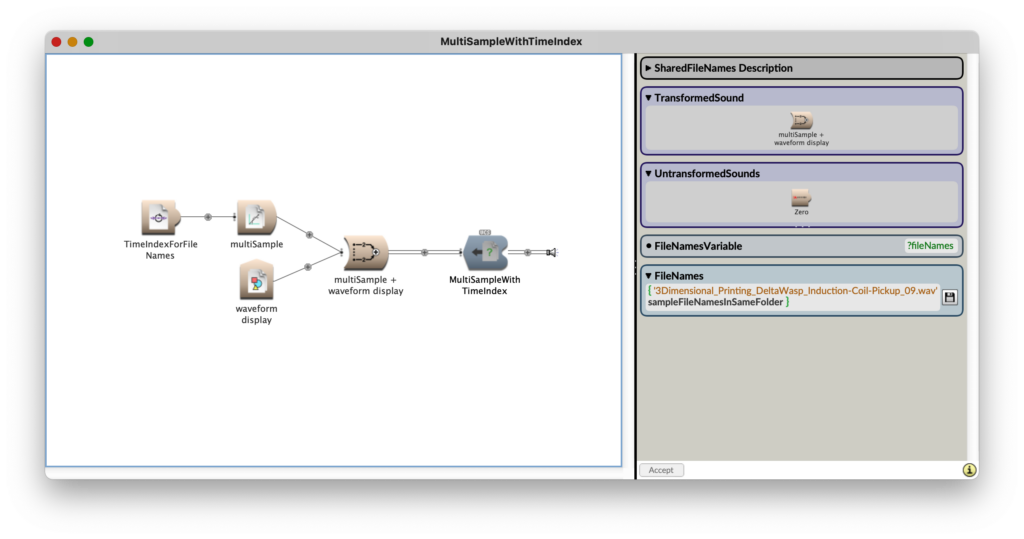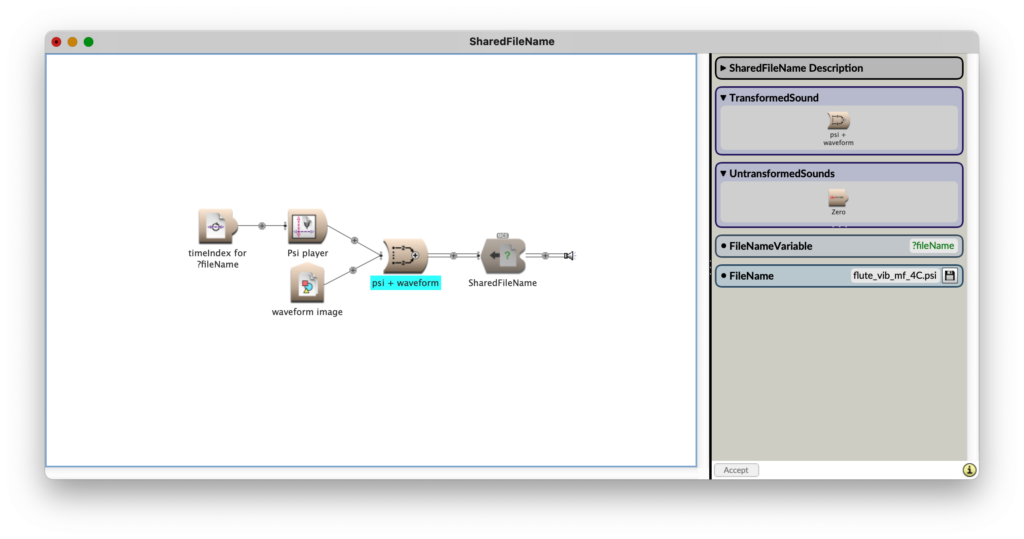PRESS RELEASE
September 6, 2022
Symbolic Sound Unveils “Pacamara Ristretto” Audio Processing Unit (APU)
2.5 times performance boost, 20% lower price, expanded connectivity, and inter-application audio
CHAMPAIGN, ILLINOIS — Symbolic Sound announces a new Audio Processing Unit (APU) representing a giant leap forward in performance, energy efficiency, and connectivity over previous generation APUs. At less than half the size, the new Pacamara “Ristretto” delivers, on average, a 2.5 times jump in performance, a 20% reduction in cost, cooler operating temperature, expanded connectivity options, and seamless inter-application routing of audio and MIDI to/from applications running on a host computer.
Performance
Pacamara Ristretto’s compute-cycles and memory are solely dedicated to sound computation, delivering unprecedented levels of performance capabilities to sound designers for film and games, live electronic music performers, sound artists, educators, researchers, and audio professionals who require the highest-quality real-time audio, responsive live interaction, and unbounded creative flexibility from their tools.
“The Pacamara Ristretto represents a radical transformation, not just because it’s Symbolic Sound’s most powerful external APU yet, but because of the ease with which it communicates with the rest of the world,” said Symbolic Sound’s president Carla Scaletti. “Audio, MIDI, and OSC streams can be freely routed between Kyma and other audio applications on your computer and audio devices in your studio, including across LANs and out onto the Internet, creating a combinatorial explosion of sound creation possibilities.”
According to game/film sound design consultant and Pacamara field tester, Alan M. Jackson, “It’s the latest, most powerful revision of the most important audio DSP environment of the last 30 years.”

Powered by Kyma
Audio professionals can leverage the full Kyma 7 accelerated sound design environment for rapid prototyping, testing, creative exploration, and refinement of production-quality sound synthesis and processing algorithms to run in real time on the Pacamara Ristretto.
Kyma, described as a “recombinant sound design environment,” gives sound designers access to extensive libraries of unique audio synthesis and processing modules, along with tools for creating limitless combinations of those algorithms. Galleries of automatically-generated signal flow graphs help speed development, spark the imagination and boost the creative flow — providing creators with the advanced models needed to solve sound design challenges for games, film, live music, data sonification, voice processing, multi-sensor controllers, and more.
Deep integration between hardware and software has always been central to the Symbolic Sound approach. Hardware design is continually informed by software development and vice versa. As a result, the Kyma 7 sound development environment is optimally tuned to take full advantage of the huge increases in processing and memory bandwidth made available by the new Pacamara APU.
Sound designer and musician Cristian Vogel describes the Kyma software environment as “the best for innovating, prototyping and designing innovative digital sound processes… frictionless for ideation and research. Then, reliable and consistent at the outcome stage.”

Say Hello to My Little Friend
 The Pacamara Ristretto is as comprehensive in its connectivity as it is diminutive in size. The back panel of the rugged, roadworthy enclosure includes:
The Pacamara Ristretto is as comprehensive in its connectivity as it is diminutive in size. The back panel of the rugged, roadworthy enclosure includes:
• USB-C port for audio and MIDI transfer to/from host computer
• Two USB 2.0 ports for connecting audio interfaces and MIDI controllers
• 3.5 mm jack sockets for mic input and stereo headphone output
• RJ-45 network port to connect via a gigabit Ethernet cable to a host computer
• Wi-Fi antenna jack
• USB-C power input port

An APU does for Real-time Audio what a GPU does for Real-time Graphics
Audio professionals require high quality, low latency, reliable real-time audio synthesis and processing. That’s what an APU can deliver.
“The question is not whether a CPU is capable of real-time graphics generation and processing. Everyone understands the advantages of offloading real-time graphics computation onto one or more GPU(s) running in parallel with your main CPU. Not only does it free up memory and computing resources on your CPU, a GPU guarantees the highest-quality, glitch-free interactive real-time graphic performance. The same is true for audio!”
“With the Pacamara you have high quality, configurable algorithms running on dedicated, uncontended hardware,” explains Jackson, “The result is that it sounds great and it’s reliable.”
Soft Hardware
Unlike traditional audio hardware, which has a fixed functionality that never changes, the Pacamara Ristretto can adapt to the evolving needs of users. Regular, significant software updates ensure that Symbolic Sound APUs continue to gain features and functionality so that they actually improve with time.
Jackson adds, “there’s a subtle and important difference between hardware that is upgradeable… and hardware that DOES get upgraded continuously and significantly. Kyma is [Symbolic Sound’s] only product and [they’ve] been working on it, passionately, for decades. [They] have a proven history of constant and significant upgrades.”
What’s in a Name?
The name, Pacamara, comes from a hybrid coffee plant bred to produce larger beans on smaller trees planted closer together — evoking both the ‘recombinant sound’ design philosophy of Kyma and the smaller size, higher-yield of the Pacamara APUs. According to Scaletti, “Coffee aficionados know that a ristretto shot delivers twice the caffeine per milliliter as a standard shot of espresso. The Pacamara Ristretto is actually 2.5 times more powerful and less than half (44%) the volume of previous generations, meaning that the computational performance by volume has increased 5.7-fold.”

Summary
The Pacamara Ristretto is an APU, designed from the ground up for real-time sound synthesis and processing; it works in parallel with your main computer to deliver high-quality real-time audio signal computation, freeing up resources on the CPU for managing your overall studio workflow.
Audio professionals can leverage the full Kyma 7 accelerated sound design environment for rapid prototyping, testing, creative exploration, and refinement of production-quality sound synthesis and processing algorithms to run in real time on the Pacamara Ristretto.
The Pacamara Ristretto APU is the most recent development in a consistent flow of innovation from Symbolic Sound — from Capybara, to Capybara 33, Capybara 66, Capybara 320, Paca(rana) — the sixth generation Pacamara Ristretto APU is groundbreaking in terms of raw compute power, delivering a 2.5-fold leap forward in performance, connectivity, and dependability backed by extensive field testing in real world performance environments.
Pricing and Availability
 The Pacamara Ristretto is available today at https://kyma.symbolicsound.com/order-now
The Pacamara Ristretto is available today at https://kyma.symbolicsound.com/order-now
Initial supplies are limited due to ongoing (and inexplicable) global electronic component shortages.
The price for a 4-processor Pacamara Ristretto is $3,818 (US)
An entry level, 2-processor system is available for $3,302 (US)
The Kyma 7 software for macOS or Windows is included with the APU.
Learn more
About Symbolic Sound
From its origins in 1990 when the first generation of APUs were assembled at a kitchen table in a student apartment, Symbolic Sound’s current software and hardware offerings represent over 30 years of continuous development, creation, refinement, and close interaction with customers, inspired by a passion for sound and an obsession with learning new things. Our business model is to share the results of our research and creative explorations in order to make it possible for us to continue this work and share future results with others so they, in turn, can build upon these results in their own creative and scientific work.














